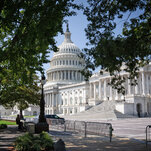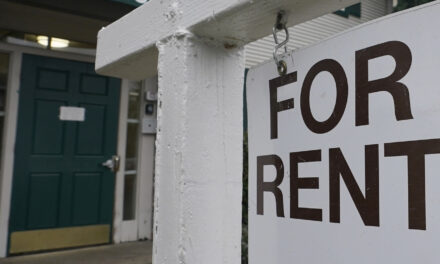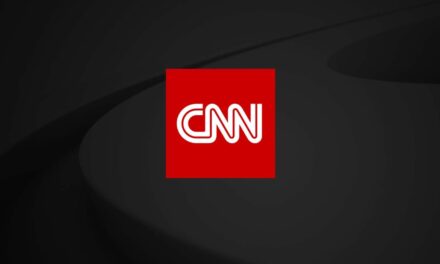
Remaking the Economy

The Morning Newsletter
Plus: Roger Federer’s greatest legacy.



President Biden’s domestic agenda seems to be back on track in Congress.
House Democrats resolved a procedural spat this week, and they and Senate Democrats are now turning to the substantive work of putting together a sprawling bill meant to slow climate change, reduce poverty and expand pre-K, college financial aid and Medicare benefits.
The package represents Biden’s most ambitious attempt to reshape the American economy — more so than either the large infrastructure bill also making its way through Congress or the pandemic-relief law that Biden signed in March. The newest bill is likely to be larger and longer lasting, and would affect many aspects of daily life, like education, health care and perhaps even the weather.
But the bill will need to survive a narrow path to pass. No Republicans are likely to support it. Democrats will thus need to maintain the support of all 50 of their senators, including moderates like Joe Manchin of West Virginia, and lose no more than three House members.
Today, we offer a guide to the package, which will occupy Congress for much of the next month and maybe beyond. Daily news coverage tends to focus on the procedural back-and-forth, for the simple reason that members of Congress and their aides are also focused on that back-and-forth. We’ll step back to walk you through the plan’s substance, including the contentious parts and the areas where Democrats seem to have a consensus.
Climate
If Biden is going to sign meaningful climate legislation in his first two years — and maybe ever — it will be as part of this bill.
The most significant provision would push the electricity sector to reduce pollution sharply over the next 15 years, which scientists say would have a major impact on carbon emissions. It would do so by subsidizing the use of solar, wind, nuclear and other forms of clean energy while financially penalizing the use of dirty energy like coal, our colleague Lisa Friedman says.
This electricity plan seems likely to be included in a final bill, although Manchin has been vague about his position on it. One unknown: How will it treat natural gas, which is less polluting than coal but more polluting than other energy forms?
The bill is also likely to help families pay for electric cars and energy-efficient homes. Another uncertainty is whether the bill will include something known as a carbon border adjustment tax — a tax on imports whose production was carbon-intensive, like many from China.
Image
Health care
“The health care parts of the bill are huge,” our colleague Margot Sanger-Katz says. “There is a lot of health care policy that will have real effects in the lives of people.” And many of the provisions seem likely to survive in the final bill.
Medicare would expand to include dental, hearing and vision coverage for Americans over 65 — an important change, given how many of them struggle to see, hear or chew, Margot says. Medicaid (the federal program focused on low-income people) would expand specifically in the 12 states that have not signed up for the program’s Obamacare expansion. Subsidies for private Obamacare plans would also grow, as would money for home health care, to help more people avoid nursing homes.
Margot says that her reporting on Capitol Hill indicates the biggest uncertainty is how aggressive Congress will be about trying to reduce prescription drug prices. That provision could be very popular — and also reduce Medicare and Medicaid spending, freeing up more money for other parts of the bill. “The House is on board for a big drug price approach,” Margot says. “But there is less consensus in the Senate, and, of course, the pharma industry will not go down without a fight.”
Education and families
The plan includes two major expansions of education. It would make prekindergarten available to every 3- and 4-year-old, likely by subsidizing the state programs that more than half of them already attend. The federal government would also try to make community college universal, by expanding financial aid to cover both tuition and living expenses.
Those provisions have the potential to lift upward mobility by reducing educational inequality, experts say. And several other provisions would immediately reduce poverty. They include:
-
The extension of a child tax credit in the pandemic relief plan that sends families up to $300 per child each month but is set to expire in December.
-
A national program of paid leave — worth up to $4,000 a month — for workers who take time off because they’re ill or caring for a relative.
-
Subsidies for child care.
Taxes
Democrats plan to pay for the bill’s costs by raising taxes on the affluent. The plan includes increases in the corporate tax rate and the top income tax rate, as well as perhaps a new tax on companies’ overseas profits.
The fight over these taxes is likely to be “the most fraught part” of the debate, says our colleague Emily Cochrane, who covers Congress. Manchin, for example, has said both that he favors a smaller corporate tax increase than what Biden and top Democrats have proposed — but also that he wants tax increases to cover the bill’s full costs. That’s one reason the bill could shrink from its current estimated cost of $3.5 trillion.
One other thorny tax issue: Some House members, especially from higher-tax states like New York and New Jersey, want to restore some deductions that largely benefit higher-income households and that Republicans scrapped during the Trump presidency. Why are Democrats pushing for a tax cut that mostly benefits the upper middle class and above? “It is truly an ‘all politics is local’ issue,” The Times’s Jim Tankersley says.
Timeline
House and Senate Democrats will negotiate in the coming weeks. Both chambers could then pass identical bills early this fall and send the legislation to the White House for Biden’s signature — if Democrats can remain united.
THE LATEST NEWS
Afghanistan
Image
-
The U.S. has helped to evacuate more than 82,000 people from Kabul’s international airport, including 4,500 U.S. citizens. About 1,500 Americans remain, as well as at least 250,000 Afghans who worked with the U.S.
-
The U.S., Britain and Australia told citizens to stay away from the airport, citing unspecified threats of a terrorist attack.
-
The Taliban told women and girls to remain home while fighters were trained not to harass or harm them.
-
“Afghanistan’s falling man”: The Wall Street Journal tells the story of the teenage soccer star who fell from a U.S. military jet.
The Virus
-
More people in Florida are dying of Covid than at any other point in the pandemic.
-
Delta Air Lines will require unvaccinated employees to pay an extra $200 per month for their health care plans.
Climate
Image
Image
Roger Federer’s greatest legacy
The tennis star Roger Federer is one of few athletes in history to earn $1 billion during his playing career — a milestone he reportedly achieved this year. He joins the ranks of Tiger Woods, Floyd Mayweather, LeBron James, Cristiano Ronaldo and Lionel Messi.
“Considering Djokovic’s and Nadal’s achievements, it’s debatable whether he’s even the greatest player of this era,” Christopher Clarey, who has followed Federer on six continents and interviewed him more than 20 times, writes in The Times Magazine. “What is undeniable, though, is that no tennis superstar has ever built a financial empire comparable to Federer’s.”
Federer’s on-court achievements make up only part of his wealth. About $130 million of his earnings have come from prize money, placing him second in tennis to Novak Djokovic, who has earned approximately $152 million. The lion’s share comes from sponsorships, exhibition events and appearance fees at tournaments. Clarey credits Federer’s billion-dollar brand to his strategic instincts and “the sort of personality that might be more suited to a boardroom or a political campaign than to a pro-sports arena.”
Read about how Federer built his empire. — Sanam Yar, a Morning writer
PLAY, WATCH, EAT
What to Cook
Image
Source: https://www.nytimes.com/2021/08/26/briefing/biden-economy-package.html
















